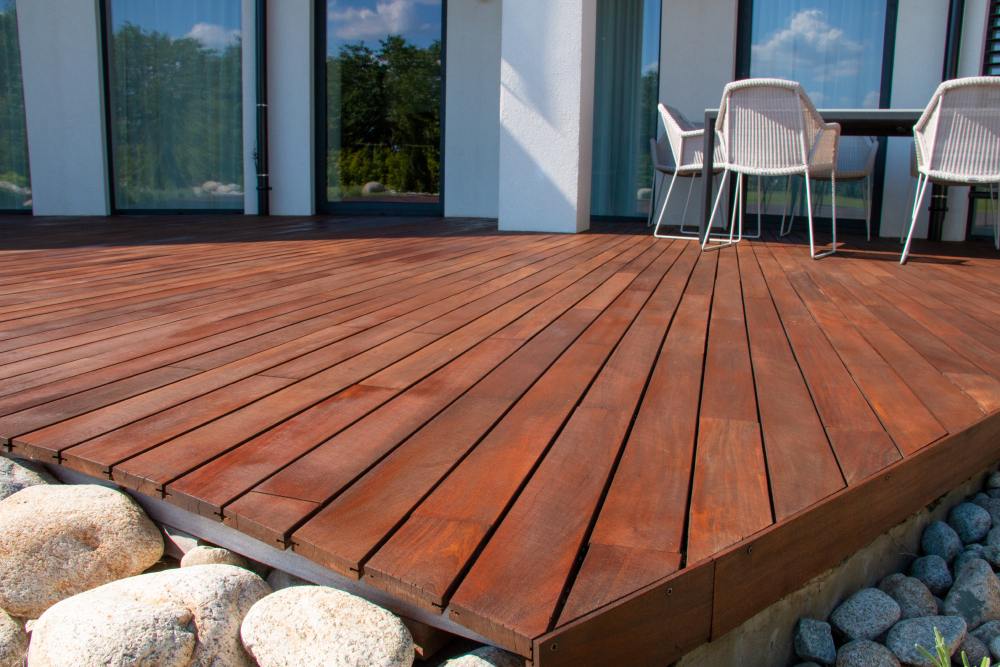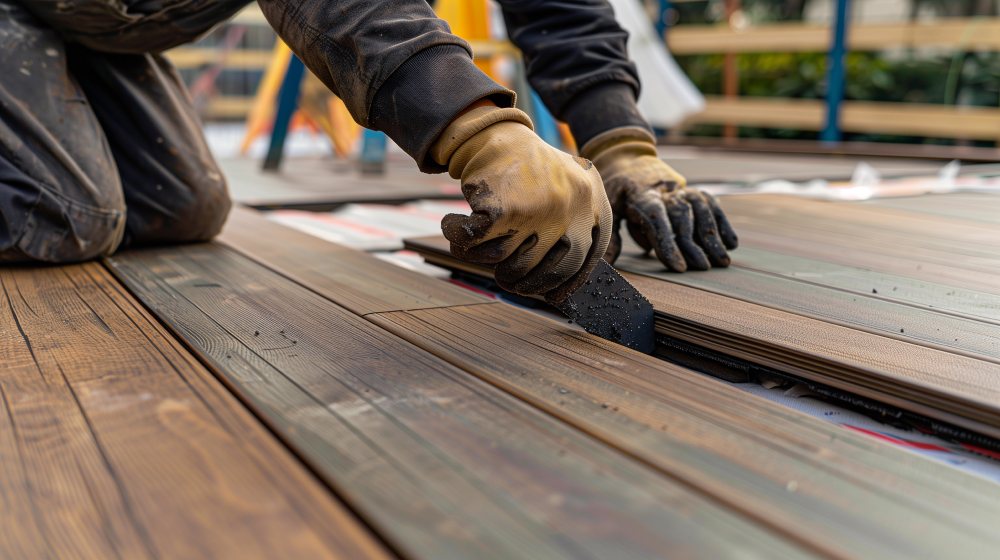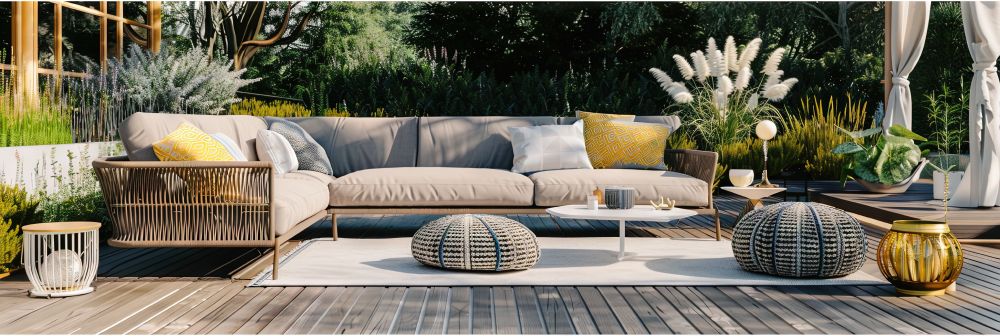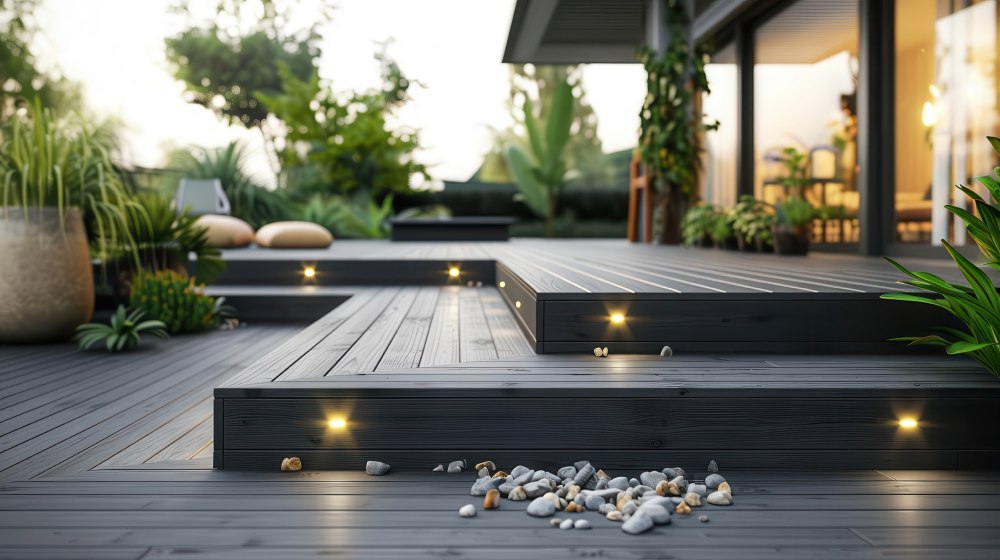1. Planning Your Deck Design
Overview: Proper planning is the foundation of any successful deck design. Understanding your space, needs, and style preferences will guide you through the design process.Steps:
- Determine Your Purpose: Decide how you will use the deck. Will it be for dining, lounging, gardening, or entertaining? Understanding the primary use will help shape the design.
- Assess Your Space: Measure the area where you plan to build the deck. Consider the size, shape, and layout of your yard, as well as any existing features like trees or paths.
- Set a Budget: Determine your budget for the project. This will influence your choice of materials, size, and additional features.
- Check Local Codes: Research local building codes and obtain any necessary permits. Ensure your design complies with all regulations.
- Sketch a Plan: Create a rough sketch of your deck design, including dimensions and key features.
- Consider Future Needs: Plan for future additions, such as a hot tub, pergola, or outdoor kitchen.
2. Choosing the Right Materials
Overview: The materials you choose for your deck will impact its appearance, durability, and maintenance requirements. Consider both aesthetics and practicality when selecting materials.Options:
- Natural Wood: Offers a classic, warm look. Popular choices include cedar, redwood, and pressure-treated pine. Requires regular maintenance.
- Composite Decking: Made from a blend of wood fibers and plastic, it is low-maintenance and durable. Available in various colors and textures.
- PVC Decking: Made entirely from plastic, it is highly resistant to moisture and insects. Low-maintenance but can be more expensive.
- Aluminum: Lightweight and extremely durable. Resistant to rust and rot, but can be costly and may not suit all aesthetics.
- Bamboo: An eco-friendly option that is strong and durable. Requires proper sealing and maintenance to prevent weather damage.
- Consider Climate: Choose materials that will withstand your local climate conditions.
- Longevity vs. Cost: Balance the initial cost with long-term maintenance and durability.
3. Incorporating Functional Features
Overview: Incorporating functional features into your deck design will enhance its usability and convenience, making it a more enjoyable space.Ideas:
- Seating Areas: Include built-in benches, lounge chairs, or sectional sofas for comfortable seating. Consider adding cushions and pillows for extra comfort.
- Dining Spaces: Designate an area for outdoor dining with a table and chairs. Consider a pergola or umbrella for shade.
- Outdoor Kitchen: Add a grill, countertop, sink, and storage to create a functional cooking area. This is ideal for entertaining.
- Fire Pit or Fireplace: Incorporate a fire pit or outdoor fireplace for warmth and ambiance. Ensure it is safely positioned and follows local fire codes.
- Lighting: Install a variety of lighting options, such as string lights, recessed lighting, and lanterns, to enhance the ambiance and functionality after dark.
- Planters and Gardens: Use planters and built-in garden beds to add greenery and flowers. This can also help define different areas of the deck.
- Accessibility: Ensure there is easy access to the house, garden, and other outdoor areas.
- Storage: Include storage solutions for cushions, garden tools, and other outdoor essentials.
Join HICP Homeowner’s Alliance
Connect with experts, get special discounts and enjoy member benefits
4. Enhancing Aesthetic Appeal
Overview: A stylish deck enhances the overall look of your home and provides a visually appealing outdoor space. Incorporate design elements that reflect your personal style and complement your home’s architecture.Ideas:
- Color Schemes: Choose a color palette that complements your home’s exterior. Use contrasting colors for railings, furniture, and accessories to create visual interest.
- Texture and Patterns: Use a combination of materials and finishes to add texture and depth. Consider patterned decking or a mix of smooth and rough surfaces.
- Decorative Railings: Select railings that match your style, whether it’s modern, traditional, or rustic. Glass panels, metal balusters, and wood slats are popular options.
- Accent Features: Add focal points such as a water feature, sculpture, or statement furniture piece to enhance the design.
- Outdoor Rugs: Use outdoor rugs to define different areas and add a splash of color and texture.
- Consistency: Ensure design elements are consistent with the overall style of your home.
- Personal Touches: Incorporate personal touches like artwork, decorative pillows, and unique lighting fixtures.
5. Maximizing Space and Layout
Overview: Maximizing the use of available space is crucial, especially for smaller decks. Efficient layouts and multi-functional areas can make a small deck feel spacious and functional.Ideas:
- Zoning: Create distinct zones for different activities, such as dining, lounging, and cooking. Use furniture and planters to define these areas.
- Vertical Space: Utilize vertical space with trellises, shelves, and hanging planters to add greenery and storage without taking up floor space.
- Built-In Furniture: Incorporate built-in seating and storage solutions to save space and reduce clutter.
- Multi-Functional Furniture: Choose furniture that serves multiple purposes, such as storage benches or extendable tables.
- Compact Features: Opt for compact, space-saving features like a fold-down table or stackable chairs.
- Flow: Ensure there is a natural flow between different areas of the deck.
- Proportion: Choose furniture and features that are proportionate to the size of your deck.
6. Ensuring Privacy
Overview: Privacy is essential for creating a comfortable and relaxing outdoor space. Incorporate elements that provide seclusion without compromising the aesthetic appeal.Ideas:
- Screens and Panels: Use lattice screens, bamboo panels, or trellises with climbing plants to create a sense of privacy.
- Fencing: Install a decorative fence around the deck to block views and add a stylish touch.
- Privacy Walls: Build a privacy wall with wood, metal, or fabric panels. Consider adding shelves or hooks for additional functionality.
- Plants and Greenery: Use tall plants, shrubs, and trees to create natural privacy barriers. Planters with tall grasses or bamboo are effective and attractive.
- Curtains and Blinds: Install outdoor curtains or blinds that can be drawn for privacy when needed and opened to enjoy the view.
- Balance: Balance privacy features with open spaces to avoid a closed-in feeling.
- Integrate: Integrate privacy elements seamlessly into the overall design.
7. Incorporating Green and Sustainable Elements
Overview: Sustainable design practices can reduce your deck’s environmental impact and create a healthier outdoor space.Ideas:
- Eco-Friendly Materials: Choose sustainable materials such as reclaimed wood, bamboo, or composite decking made from recycled materials.
- Energy-Efficient Lighting: Use solar-powered or LED lighting to reduce energy consumption.
- Water Conservation: Install a rainwater collection system to water plants and gardens.
- Native Plants: Use native plants in your landscaping to promote biodiversity and reduce water usage.
- Natural Finishes: Opt for natural, non-toxic finishes and sealants to protect the wood and the environment.
- Research: Research the environmental impact of materials and products before purchasing.
- Local Plants: Choose plants that are well-suited to your local climate and require minimal maintenance.
8. Adding Comfort and Convenience
Overview: Incorporating comfort and convenience features can enhance the usability and enjoyment of your deck.Ideas:
- Shade Solutions: Add shade structures like pergolas, awnings, or umbrellas to provide relief from the sun.
- Outdoor Heating: Use outdoor heaters, fire pits, or chimineas to extend the usability of your deck into cooler months.
- Cooling Options: Install ceiling fans or misting systems to keep the deck cool during hot weather.
- Entertainment Systems: Set up an outdoor entertainment system with a TV, speakers, and Wi-Fi to create an outdoor living room.
- Convenient Access: Ensure easy access to the deck from the house, garden, or pool area. Consider adding pathways or steps if needed.
- Weatherproofing: Choose weatherproof furniture and accessories to ensure they withstand the elements.
- Comfort: Add cushions, throws, and blankets to enhance comfort and create a cozy atmosphere.
9. Safety Considerations
Overview: Ensuring your deck is safe is crucial, especially if you have children or pets. Implement safety features to prevent accidents and injuries.Ideas:
- Secure Railings: Ensure railings are securely installed and meet local safety codes. Use balusters or panels to prevent falls.
- Non-Slip Surfaces: Apply non-slip coatings or use non-slip mats in high-traffic areas to prevent slipping.
- Proper Lighting: Install adequate lighting along pathways, stairs, and the deck perimeter to improve visibility at night.
- Childproofing: Install gates at deck entrances and stairs to keep children safe. Use childproof locks on gates and storage areas.
- Fire Safety: Keep fire pits, grills, and other heat sources away from flammable materials. Have a fire extinguisher readily available.
- Regular Inspections: Regularly inspect the deck for any safety hazards and address them promptly.
- Education: Educate family members about deck safety and the proper use of features like fire pits and grills.
Designing a functional and stylish deck requires careful planning, thoughtful selection of materials, and creative design elements. By incorporating functional features, enhancing aesthetic appeal, and ensuring safety, you can create a deck that serves as an extension of your home and provides a beautiful, comfortable outdoor space for relaxation and entertainment. Whether you’re starting from scratch or renovating an existing deck, these ideas and inspirations will help you achieve a design that meets your needs and reflects your personal style. With attention to detail and a focus on quality, your deck can become a cherished part of your home for years to come.








